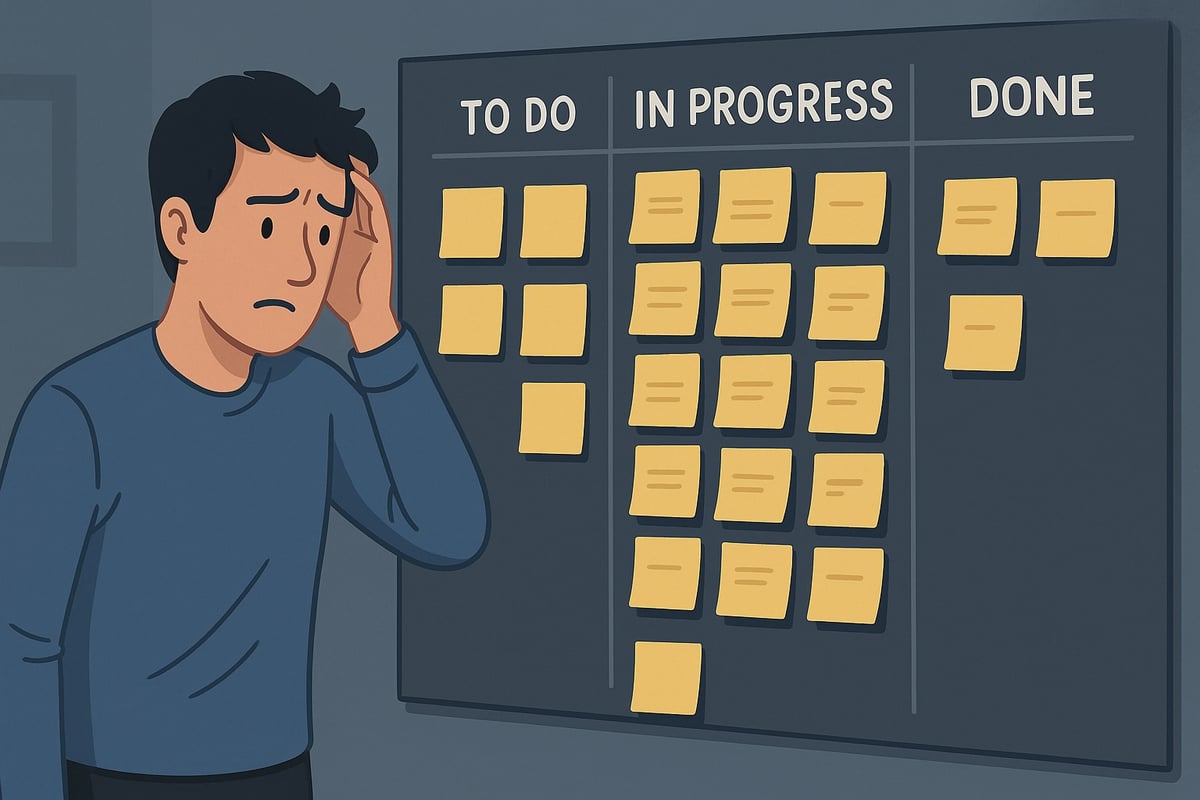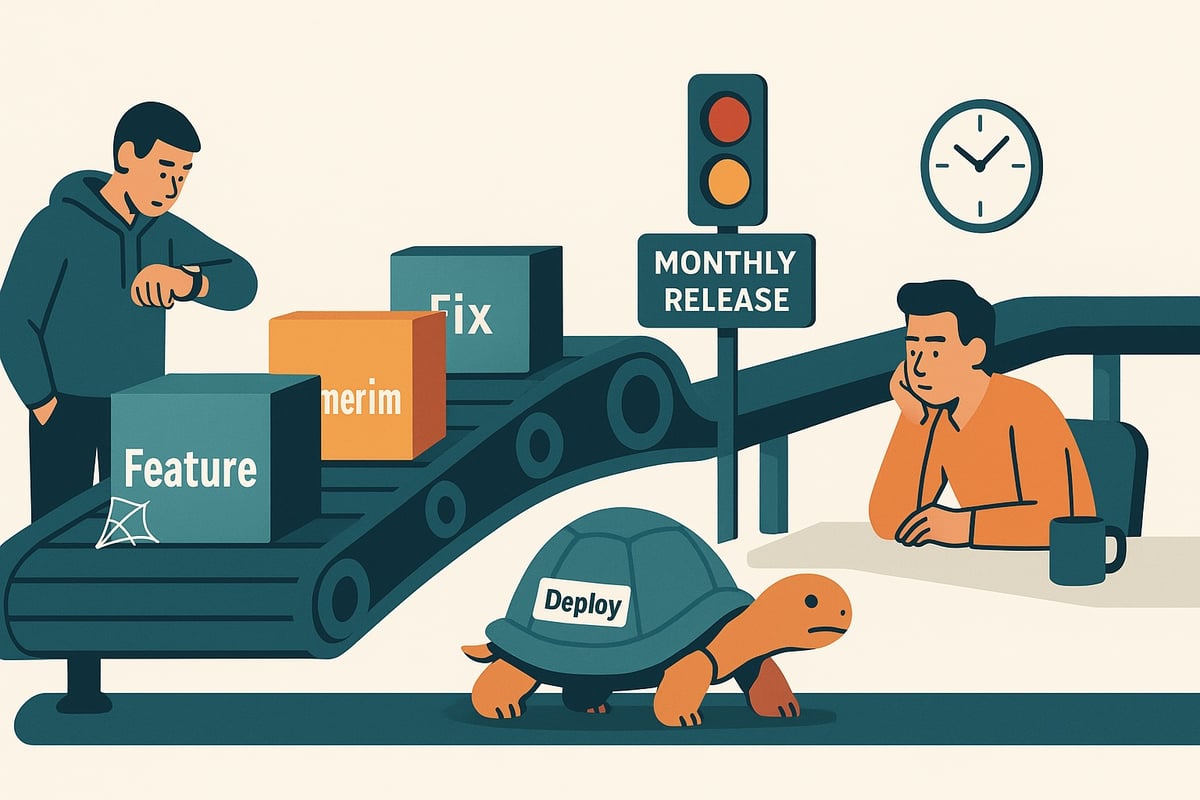As an engineering leader, you’ve likely experienced that frustrating moment: you’ve just made a compelling case for an urgent infrastructure upgrade, only to face blank stares from executives followed by, “Can’t we just add more customer features instead?” Despite your technical expertise, the business value of your proposal seems to evaporate somewhere between your brain and their understanding.
This communication gap isn’t just annoying, it’s expensive. Research shows that organizations with effective technical-to-business communication secure significantly higher approval rates for critical infrastructure and technical debt initiatives. Those implementing strategic communication approaches have secured 37% higher approval rates for technical initiatives and 28% higher project success rates.
The Translation Problem: Why Technical Communication Often Fails
The core challenge isn’t that non-technical stakeholders are incapable of understanding technical concepts. Rather, we as technical leaders often fail to translate our needs into terms that resonate with their priorities and mental models.
Common communication mistakes include:
- Speaking in jargon: Talking about “refactoring the API middleware layer” when stakeholders don’t know what an API is. As QAT advises, “To increase your stakeholders’ understanding, start by eliminating intimidating technical phrases and acronyms.”
- Focusing on implementation: Explaining the technical “how” rather than the business “why” - instead, speak in terms of results that matter to stakeholders.
- Assuming shared context: Taking for granted knowledge that isn’t common outside technical circles.
- Overwhelming with details: Providing too much information that obscures the core message.
Many executives view technical infrastructure discussions as simply “expensive things with unclear benefits.” What they really need to understand is how these investments will affect customers and impact the bottom line.
Powerful Frameworks for Bridging the Gap
The good news is that with the right frameworks, you can dramatically improve how you communicate technical needs. These approaches have help businesses secure millions in funding for essential technical initiatives.
The BLUF (Bottom Line Up Front) Method
This framework forces you to start with the most important conclusion or request, followed by brief context and specific action items:
| Component | Example |
|---|---|
| Bottom Line | “We need to invest $100K in cloud migration to reduce annual IT costs by 18% while improving system reliability.” |
| Context | “Our current infrastructure is approaching capacity limits and experiences an average of 43 minutes of downtime monthly.” |
| Action | “We’re proposing a phased migration over the next quarter with minimal customer impact.” |
This approach respects busy executives’ time by immediately presenting the business impact, rather than building up to it through technical details.
The REE Framework (Recommendation, Evaluation, Expectation)
For more complex proposals, structure your communication into these three components:
- Recommendation: Clear, specific action you’re requesting
- Evaluation: Evidence-based justification tied to business metrics
- Expectation: Concrete outcomes with timeline and measurement approach
For example:
“We recommend allocating two weeks to reducing technical debt in our payment system (Recommendation). Our current architecture creates an average of 3 production incidents monthly, each costing approximately $5,000 in developer time and lost revenue (Evaluation). By refactoring these components, we expect to reduce payment-related incidents by 80% within 30 days, saving roughly $12,000 monthly while improving customer satisfaction scores (Expectation).”
Master the Art of Technical Analogies
The right analogy can instantly bridge the comprehension gap, connecting complex technical concepts to familiar experiences.
For finance executives: “Technical debt operates exactly like credit card debt. We can make minimum payments indefinitely (bug fixes), but the principal (underlying issues) remains, accumulating interest (increasingly expensive fixes) over time. Eventually, this leads to technical bankruptcy where rewriting becomes our only option—at 5-10x the cost of regular maintenance.” This financial parallel resonates strongly with executives who manage budgets daily. (For a deeper understanding of how technical debt impacts your engineering velocity, read my post on Tech Debt: The Hidden Drag on Your Product Velocity).
For real estate stakeholders: “Our current monolithic architecture is like a house where all the electrical wiring runs through a single circuit breaker. When anything fails, the whole house goes dark. The microservices architecture we’re proposing is like having separate circuits for each room—isolated, independently maintainable, and failures affect only one area.”
Translate Technical Metrics into Business Impact
The most effective technical communication connects engineering metrics directly to business outcomes that stakeholders already care about:
| Technical Metric | Business Impact Translation |
|---|---|
| Server response time | “Reducing page load time from 3s to 1s will increase conversion rates by approximately 27%, based on industry benchmarks” |
| Test coverage | “Increasing test coverage will reduce critical bugs in production by 40%, directly improving our App Store rating by an estimated 0.8 points” |
| Database performance | “Optimizing our database will reduce operating costs by $15K monthly while enabling us to handle 3x our current peak traffic” |
This translation works because it connects your technical initiative directly to metrics that already matter to the business—revenue, costs, customer satisfaction, and market position. For more on which engineering metrics truly impact business outcomes, check out my article on Metrics that Matter: Translating Engineering Performance for the C-Suite.
Practical Implementation: Your Communication Toolkit
Based on my experience with many of technical and non-technical leaders, here are concrete tactics you can implement immediately:
1. Create a Two-Column Format for All Technical Proposals
| Technical Need | Business Impact |
|---|---|
| Kubernetes migration | • 35% infrastructure cost reduction • 70% faster deployment time • 99.99% availability capability |
| Authentication system refactoring | • Eliminate security vulnerabilities affecting 100% of customer data • Enable single sign-on for enterprise clients • Reduce login-related support tickets by 80% |
This format forces you to articulate business value for every technical requirement and keeps stakeholders focused on outcomes rather than implementation.
2. Develop an Analogy Library
Maintain a collection of tested analogies that work with your specific stakeholders. Note which ones resonate with different audiences, and refine them over time.
Lea Pica suggests the “You know how…” method to create immediate connection points that make complex topics more approachable.
3. Quantify Risk in Financial Terms
Convert technical risks into financial impact statements:
- “Each hour of system downtime costs us approximately $42,000 in lost transactions and recovery time.”
- “Without this security upgrade, we face a 22% increased risk of a data breach, with average incident costs in our industry of $3.8 million.”
When risks have dollar signs attached, they become much more tangible to business stakeholders.
Measuring Your Communication Effectiveness
To improve, you need to measure. Track these indicators to gauge your communication effectiveness:
- Decision Velocity: Time from initial proposal to formal approval
- Question Reduction: Decrease in clarification requests after presentations
- Implementation Alignment: Degree to which final solutions match initial proposals
The Long-Term Payoff: Building a Translation Culture
The ultimate goal isn’t just to get approval for your next technical initiative, it’s to transform how technical and business stakeholders communicate across your organization.
The most successful organizations institutionalize these communication practices by:
- Creating analogy libraries: Curated collections of effective metaphors
- Establishing visualization standards: Consistent approaches to representing technical concepts visually
- Running cross-functional workshops: Regular sessions bringing technical and business teams together
- Communication training: Helping technical teams develop business translation skills
When this translation culture takes root, business stakeholders become more technically literate over time, while technical teams naturally develop the habit of connecting their work to business outcomes. This cultural shift is especially important for CTOs and engineering leaders in growing companies, as discussed in my article on Prioritizing Tech Initiatives.
Putting It Into Practice
Communication isn’t just a soft skill for engineering leaders, it’s a critical lever that determines whether your most important technical initiatives receive the support and resources they need. Fearless Presentations emphasizes that “the more technical your presentation, the more analogies you will need” to ensure stakeholders truly understand your message.
Start by selecting one upcoming technical proposal and apply these frameworks. Translate the metrics, craft appropriate analogies, and focus relentlessly on business outcomes. Then measure the difference in how quickly you receive approval and alignment.
Organizations implementing strategic communication approaches secure higher approval rates for technical initiatives, reduction in project clarification requests, and higher project success rates across multiple initiatives.
What technical initiative are you currently struggling to get buy-in for? I’d love to hear about your communication challenges.








